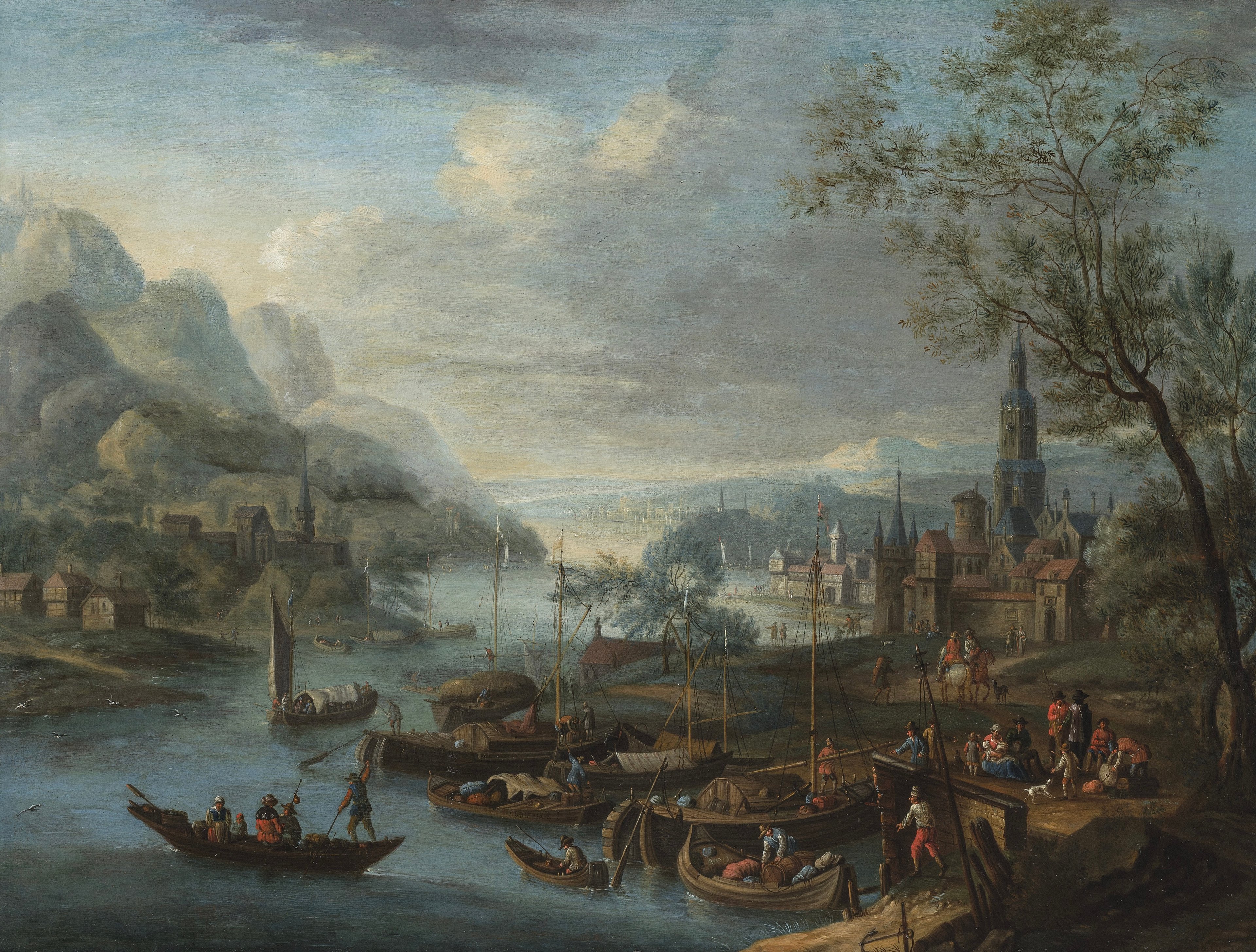
Travel offered artists like Griffier the opportunity to find new motifs and develop their skills. The Rhine Valley became a central theme that he processed in atmospheric studio paintings.
On the road with the brush
Extensive travel was also widespread among artists and represented the expansion of horizons in a quite literal sense. In addition, economic circumstances often forced painters to move from one place to another; in this regard, they regularly provided an opportunity for artists to systematically add to their own repertoire of motifs.
Lined with high mountains, the Rhine Valley with its numerous towns and castles and filled with a lively trade in goods offered a wealth of suggestions that could be varied again and again. This is a pivotal theme in Griffier’s work: the painter was able to rely on individual observations captured in sketches without having to accurately depict the local conditions. Created in the studio, such portrayals of a world as vibrant as it was diverse and unclouded by the slightest sign of misfortune held out enormous appeal in an age fond of travel and which was already showing signs of globalisation. Moreover, they promised good sales.
Amsterdam’s Jan Griffier sought new professional opportunities beyond the borders of his homeland. He decided to pursue his career in London, which had long been a centre of attraction for many of his compatriots. By 1700 it was already one of the leading global metropolises. England rose to world power thanks largely to its fleet, while the Dutch so-called 'Golden Age‘ continued to draw to a close despite its great prosperity. Griffier’s work took up a number of achievements in Dutch painting from the previous century, such as the detailed depictions of winter or mountain landscapes featuring multiple figures in a small format ready for sale. The noticeable precision of the workmanship is typical of the refined taste of a discerning clientele at the beginning of the 18th century.
Text: Ulrich Becker